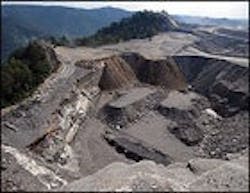EPA Issues Guidance to Protect Appalachian Communities From Harmful Impacts of Mountaintop Mining
The U.S. Environmental Protection Agency (EPA) announced a set of actions to further clarify and strengthen environmental permitting requirements for Appalachian mountaintop removal and other surface coal mining projects, in coordination with federal and state regulatory agencies. Using science and following the law, the comprehensive guidance sets clear benchmarks for preventing significant and irreversible damage to Appalachian watersheds at risk from mining activity, EPA said.
Mountaintop removal is a form of surface coal mining in which explosives are used to access coal seams, generating large volumes of waste that bury adjacent streams. The resulting waste that then fills valleys and streams can significantly compromise water quality, often causing permanent damage to ecosystems and rendering streams unfit for swimming, fishing and drinking. It is estimated that almost 2,000 miles of Appalachian head water streams have been buried by mountaintop coal mining.
"The people of Appalachia shouldn't have to choose between a clean, healthy environment in which to raise their families and the jobs they need to support them,” said EPA Administrator Lisa P. Jackson. “That’s why EPA is providing even greater clarity on the direction the agency is taking to confront pollution from mountain top removal. We will continue to work with all stakeholders to find a way forward that follows the science and the law. Getting this right is important to Americans who rely on affordable coal to power homes and businesses, as well as coal communities that count on jobs and a livable environment, both during mining and after coal companies move to other sites.”
A growing body of scientific literature, including previous and new studies performed by EPA, show significant damage to local streams that are polluted with the mining runoff from mountaintop removal. To protect water quality, EPA has identified a range of conductivity (a measure of the level of salt in the water) of 300 to 500 microSiemens per cm. The maximum benchmark conductivity of 500 microSiemens per cm is a measure of salinity that is roughly five times above normal levels. The conductivity levels identified in the clarifying guidance are intended to protect 95% of aquatic life and freshwater streams in central Appalachia.
Source: U.S. EPA
